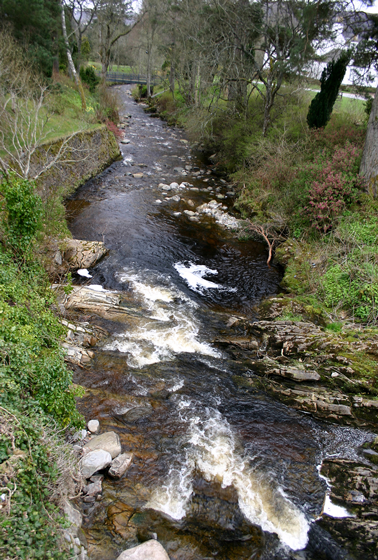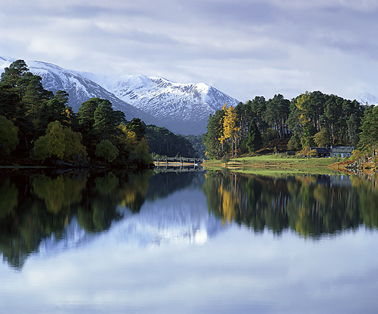Water Environment
The Scotland River Basin District covers around 113,920 km2, from Shetland in the north to Glasgow, Ayr and Edinburgh in the south. Around 4.8 million people live in the District, most in the central belt between Glasgow and Edinburgh. The landscape is varied – from the mountainous Highlands and the extensive coastline to the urban and industrial areas around Glasgow and Edinburgh.
Overall, the district has fewer environmental problems than most others in the UK. The Highlands are mountain ranges of sandstone and granite, rising to Britain’s highest mountain, Ben Nevis. Much of the Scottish uplands are characterised by large tracts of blanket bog, which are more extensive in Scotland and Ireland than elsewhere in Europe. The oceanic climate and varied topography of the western Highlands and Islands give rise to a diverse and rich botany. The district supports important habitats and wildlife; including 235 water dependent Special Areas of Conservation and Special Protection Areas.
Generally, Scotland has a high quality water environment and this reputation provides many social and economic benefits including good quality drinking water, high ‘brand value’ for Scottish products like whisky, beer, spring water, shellfish and salmon, and opportunities for tourism and recreation.
In Scotland, groundwater - natural source of water underground - contains the largest volumes of freshwater. The rest is contained in surface water - lochs, rivers and burns. The quality of these freshwater sources is important because they are used for drinking water supply with about 90% coming from surface waters, the remainder from groundwater. Water is also needed for electricity generation, agriculture, fish farming, industry and many other uses.
SEPA have divided surface waters in the Scotland River Basin District into:
- 2,005 rivers (total length 20822 km)
- 309 lochs (total area 961 km2)
- 40 transitional waters (total area 605 km2)
- 449 coastal water bodies (total area 45796 km2).
In addition 106 groundwater bodies have been identified having a total area of 66250 km2.
For more information see:
(http://www.sepa.org.uk/environment/water/)


Lochs
The term loch is Gaelic in origin and applies to most natural freshwater lakes as well as many long narrow inlets to the sea. Lochs cover some 2% of Scotland’s land area and much of the west and north coast is characterised by sea lochs, the longest of which is Loch Fyne (60 km).
Major inland lochs include:
- Loch Lomond (area 70km2, mean depth 37m, maximum depth 190m),
- Loch Ness (area 56km2, mean depth 132m, maximum depth 230m),
- Loch Awe (area 38km2, mean depth 32m, maximum depth 93m).
For a list of Scottish lochs see: http://en.wikipedia.org/wiki/List_of_Scottish_lochs
Rivers
The ten major rivers of Scotland, in order of length, are:
- The Tay (193 km)
- Spey (172 km)
- Clyde (171 km)
- Tweed (156 km)
- Dee (137 km)
- Don (132 km)
- Forth (105 km)
- Findhorn (101 km)
- Deveron (98 km)
- Annan (79 km)
For a list of Scotland’s rivers see: (http://en.wikipedia.org/wiki/List_of_rivers_of_Scotland)
and for information on river flows see the National River Flow Archive:
(http://nrfa.ceh.ac.uk/)
Coastal Areas
Scotland's coastal zone is notable in both a UK and a European context for its scale and variety. The coastline is long relative to the country's size and often highly indented, with island archipelagos to both the north and west. The distribution of these islands gives Scotland one of the largest inshore areas (within 12 nautical miles of the coast) of any country in the EU. For further information on Scotland’s coastal areas see:
(http://www.gov.scot/Topics/marine/seamanagement/regional/Scottish-Coastal-Forum)
You are here:

Tel: +44 (0) 1628 891 589 Fax: +44 (0) 1628 472711
Registered Office: Allen House, The Listons , Liston Road, Marlow,
Buckinghamshire SL7 1FD, UK © 2015 FWR All rights reserved.
The Foundation for Water Research is a company limited by guarantee,
registered in England, No 525927 and a registered charity No 1086685.